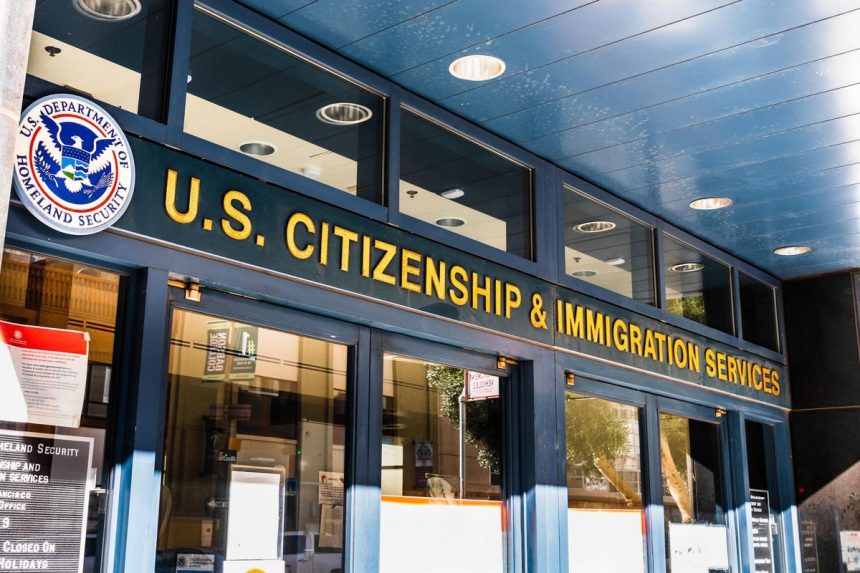U.S. Citizenship and Immigration Services (USCIS) is set to release a revised version of Form I-9, Employment Eligibility Verification, on August 1, 2023, taking a significant step towards streamlining the employment eligibility verification process. This improved form will offer employers enrolled in E-Verify the option to remotely examine identity and employment authorization documents through a Department of Homeland Security (DHS) authorized alternative procedure. The new process comes as temporary COVID-19 flexibilities end on July 31, providing employers with more convenient and efficient means of verification.
A New Chapter in Employment Verification
The COVID-19 pandemic brought unprecedented challenges to businesses across the nation. While it posed obstacles, it also accelerated the adoption of remote work and digital solutions. USCIS’s introduction of the revised Form I-9 embraces this new era, providing a smoother and more efficient process for employers to verify the eligibility of their employees.
Remote Examination for E-Verify Employers
One of the notable features of the revised Form I-9 is the checkbox that allows employers enrolled in E-Verify to indicate remote examination of identity and employment authorization documents. This approach was authorized by the Department of Homeland Security (DHS) and was introduced through a final rule announced in the Federal Register on July 21, 2023. This rule also recognizes the conclusion of temporary COVID-19 flexibilities on July 31, 2023, and opens up optional alternatives for employers to examine Form I-9 documentation remotely.
To take advantage of the virtual remote examination option, employers must be enrolled in E-Verify and comply with specific requirements, including retaining copies of all documents, conducting live video interactions with employees, and creating an E-Verify case for new hires. By offering this alternative procedure, USCIS aims to reduce administrative burdens for employers while maintaining the integrity of the verification process.
Key Revisions to Form I-9
Beyond the remote examination option, the revised Form I-9 boasts several key updates intended to streamline the verification process. Notable changes include reducing Sections 1 and 2 to a single-sided sheet, making the form fillable on tablets and mobile devices for added convenience, and relocating the Section 1 Preparer/Translator Certification area to a separate, standalone supplement.
Additionally, Section 3, Reverification and Rehire, has been moved to a separate supplement that employers can use when necessary. The Lists of Acceptable Documents page has been revised to include acceptable receipts and offer guidance and links to information on automatic extensions of employment authorization documentation.
To enhance usability, the revised form has also significantly reduced its instructions from 15 to 8 pages, making it easier for employers to understand and implement.
The Transition Timeline
Employers who have been participating in E-Verify and created cases for employees during the COVID-19 flexibilities period (March 20, 2020, to July 31, 2023) can choose to adopt the new alternative procedure from August 1, 2023. They will have until August 30, 2023, to fulfill the physical document examination requirement.
While the remote examination option is a boon for employers already using E-Verify, USCIS has considered businesses that have yet to adopt this system. Employers not enrolled in E-Verify during the COVID-19 flexibilities must conduct an in-person physical examination by August 30, 2023. A third-party agent can assist employers not enrolled in E-Verify to complete in-person physical reviews of documents as required.
Employers can continue using the current Form I-9 (edition date 10/21/19) until October 31, 2023. As of November 1, 2023, all employers are mandated to utilize the revised Form I-9 for their verification process. Once published, the revised Form I-9 will be available on uscis.gov.
Next Steps For Employers
USCIS’s introduction of the revised Form I-9 heralds a new era in streamlined employment eligibility verification for employers. The virtual remote examination option under the DHS-authorized alternative procedure provides greater flexibility and ease while maintaining compliance with immigration regulations. Employers not currently using E-Verify may consider registering or can explore the opportunity to engage a third-party agent for in-person remote verification. As the transition timeline approaches, employers should take proactive steps to understand and implement these updates, ensuring a seamless and compliant onboarding process for their workforce.
Read the full article here










